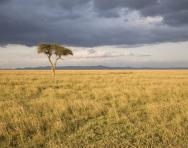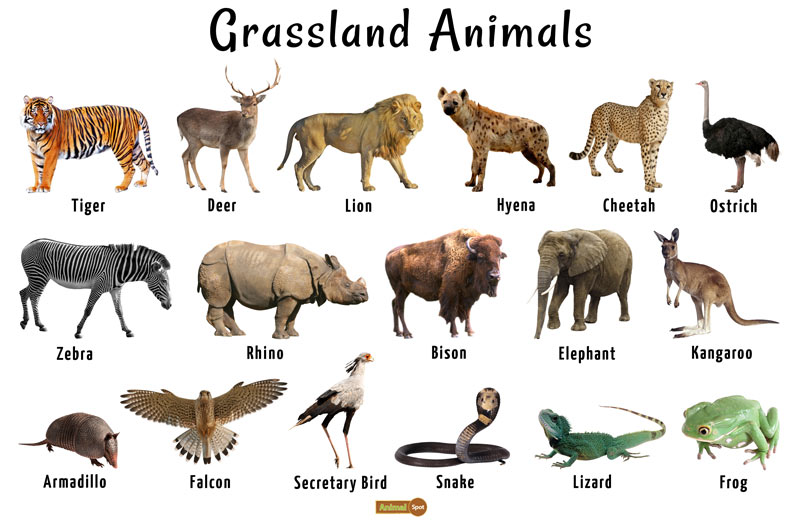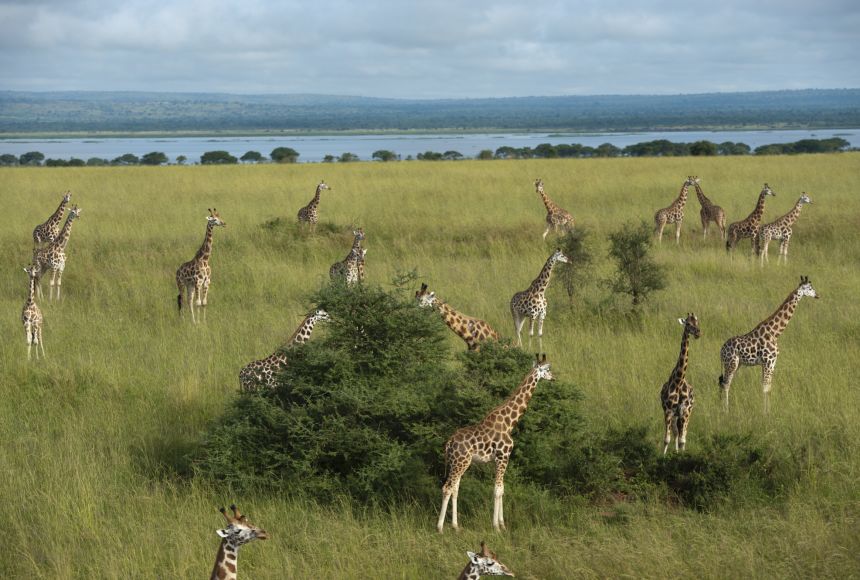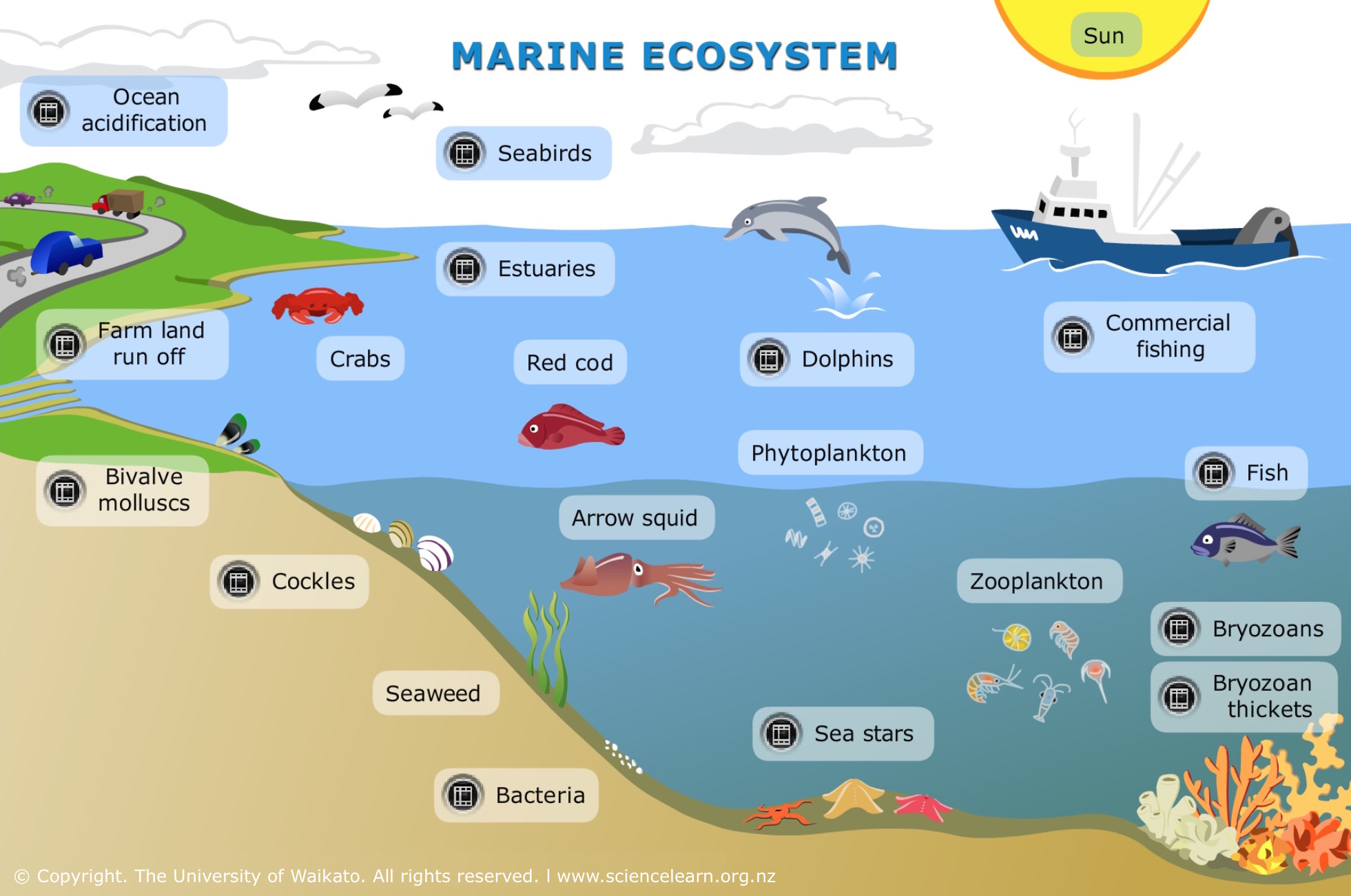Topic habitat of grassland: Discover the vast and vibrant habitats of grasslands, where diverse ecosystems thrive, supporting a rich array of wildlife and flora. Explore the beauty and ecological importance of these essential landscapes.
Table of Content
- What is the habitat of grassland?
- Types of Grasslands
- Geographical Distribution
- Climate Conditions
- Flora: Grasses and Wildflowers
- Fauna: Grazing Animals and Predators
- YOUTUBE: What are Grasslands - Science for Kids
- Ecological Importance
- Human Impact and Conservation
- Adaptations of Plants and Animals
- Grassland Ecosystem Services
- Challenges Facing Grasslands
What is the habitat of grassland?
The habitat of grasslands can be described as follows:
- Grasslands are typically found in the dry interior regions of continents, situated between mountains and deserts.
- These landscapes were primarily formed tens of thousands of years ago.
- In regions where the climate is too arid for dense tree growth, grasses dominate the landscape.
- Grasslands consist of vast stretches of land covered in various species of grasses.
- Grasses are incredibly tough plants that can withstand harsh weather conditions.
- Unlike forests or woodlands, grasslands do not have a significant number of trees.
Overall, grasslands provide a unique habitat for various plant and animal species that have adapted to thrive in this specific environment.
READ MORE:
Types of Grasslands
Grasslands, vast expanses dominated by grasses, are critical ecosystems found across the globe. They are categorized based on climate, geography, and vegetation into several distinct types, each supporting unique flora and fauna.
- Tropical Grasslands (Savannas): Located near the equator, these grasslands experience warm temperatures year-round and distinct wet and dry seasons. Savannas are rich in biodiversity, including large mammals like lions, elephants, and zebras.
- Temperate Grasslands: Found in cooler climates, these regions have hot summers and cold winters. They include the North American prairies, the Eurasian steppes, and the South American pampas, supporting animals such as bison, antelope, and wolves.
- Flooded Grasslands: These areas, including the Pantanal in South America and the Okavango Delta in Africa, are seasonally flooded, creating rich habitats for waterfowl, reptiles, and aquatic plants.
- Montane Grasslands: Situated in mountainous regions, these grasslands are found at high altitudes and are characterized by a cooler climate, supporting a variety of grasses, wildflowers, and specialized wildlife.
- Desert Grasslands: Located on the edges of deserts, these grasslands receive slightly more rainfall than deserts, allowing for the growth of grasses and shrubs, and are home to adapted species that can survive arid conditions.
- Tundra Grasslands: Found in the high Arctic, these areas are characterized by cold, harsh climates and short growing seasons. The vegetation is primarily grasses and mosses, supporting cold-adapted species like caribou and Arctic hares.
Each grassland type plays a crucial role in the global ecosystem, providing habitats for numerous species, influencing the water cycle, and contributing to carbon storage.

Geographical Distribution
Grasslands cover vast areas across the globe, forming essential ecosystems on every continent except Antarctica. Their distribution is influenced by climate, soil types, and geographical location, reflecting a wide range of environmental conditions and biomes.
- North America: Includes the Great Plains, featuring prairies that range from tallgrass to shortgrass ecosystems.
- South America: Home to the Pampas, vast fertile plains that are crucial for agriculture and livestock grazing.
- Africa: Known for the Savannas, expansive grasslands dotted with trees, which host a diverse array of wildlife, including many large mammal species.
- Asia: Features the Steppes, extensive areas of grassland stretching from Ukraine through Russia to Siberia, with a semi-arid climate.
- Australia: Contains the Australian Savannas, characterized by wet and dry seasons, supporting unique flora and fauna adapted to these conditions.
- Europe: Has several grassland types, including the temperate grasslands of the Hungarian Puszta and the steppes in Eastern Europe.
These diverse grassland habitats are vital for biodiversity, supporting countless species of plants, animals, and microorganisms. They play a key role in local and global ecosystems, contributing to carbon storage, flood mitigation, and providing resources for human use.
Climate Conditions
Grasslands are characterized by their unique climate conditions, which play a crucial role in shaping the ecosystem. These regions typically experience a wide range of temperatures, with marked differences between seasons. Below are the key climate features of grassland habitats:
- Temperature Range: The temperature in grasslands can vary significantly, with hot summers and cold winters. Temperatures can swing from as low as -20°C (-4°F) in the winter to as high as 30°C (86°F) during the summer months.
- Precipitation: Grasslands receive moderate amounts of rainfall, averaging between 500 to 900 millimeters (20 to 35 inches) annually. This level of precipitation supports the growth of grasses but is insufficient to sustain large forests.
- Seasonal Variation: Grasslands experience distinct seasons, with a notable dry season. The availability of water during the growing season is critical for the survival of native plant species.
- Soil Conditions: The climate of grasslands contributes to the development of rich, fertile soils, often making these areas ideal for agriculture. The decomposition of grass roots and other organic material adds nutrients to the soil, enhancing its fertility.
These climate conditions contribute to the biodiversity of grasslands, supporting a variety of plants and animals adapted to the environment. The balance between precipitation and temperature, along with the soil quality, influences the types of vegetation and wildlife that can thrive in these ecosystems.
:max_bytes(150000):strip_icc()/164249141-56a006353df78cafda9fb0e5-be1ea8f1f1774e12bde868a948812d8d.jpg)
Flora: Grasses and Wildflowers
The flora of grasslands is predominantly made up of grasses, interspersed with a variety of wildflowers, creating a rich tapestry of plant life adapted to the unique conditions of this habitat. The diverse vegetation plays a critical role in the ecosystem, supporting a wide range of wildlife and contributing to the soil"s health. Here is an overview of the typical grasses and wildflowers found in grasslands:
- Grasses: Grasslands are dominated by grass species that are well adapted to extremes of drought and rainfall. Common grass types include buffalo grass, blue grama, ryegrass, and fescues, which form the primary diet for many grazing animals.
- Wildflowers: Amidst the grasses, wildflowers bloom, adding color and diversity to the landscape. These include species like blazing stars, goldenrods, asters, milkweed, lupines, and purple coneflowers. Wildflowers not only beautify the grassland but also play a crucial role in the ecosystem by supporting pollinators.
Grassland flora has evolved to survive in conditions where nutrients are limited and water availability can be unpredictable. Grasses typically have deep root systems that help stabilize the soil and retain moisture, while wildflowers often have adaptations that allow them to quickly bloom and seed within short periods of favorable conditions.
Together, the grasses and wildflowers of grasslands contribute to a balanced and resilient ecosystem, offering essential services such as erosion control, water filtration, and carbon sequestration, while providing habitat for a multitude of species.
Fauna: Grazing Animals and Predators
Grasslands support a diverse array of fauna, including both grazing animals and their predators, which are integral to maintaining the ecological balance of these habitats. The open landscapes of grasslands provide the perfect conditions for grazers and browsers, which in turn support a variety of predators. Here"s a closer look at the dynamic fauna of grassland ecosystems:
- Grazing Animals: These are the most visible inhabitants of grasslands, relying on the abundant grasses for food. Species include the African elephant, bison, antelopes (such as the wildebeest), zebras, and various species of deer. Grazers play a crucial role in grassland ecology by keeping the grass short and helping seeds disperse.
- Browsers: Animals like giraffes and smaller mammals consume leaves, shoots, and twigs from bushes and trees that occasionally dot the grassland landscape. Their feeding behavior helps in maintaining the balance between grassy and wooded areas within the ecosystem.
- Predators: Predators such as lions, wolves, cheetahs, and eagles are vital for controlling the population of grazing animals, preventing overgrazing, and thus contributing to the health of the grassland ecosystem. They target the sick, old, and weaker animals, ensuring a healthy and robust prey population.
- Smaller Fauna: Besides the larger animals, grasslands are also home to a variety of smaller creatures, including rodents, insects, and birds. These species are crucial for pollination, seed dispersal, and as a food source for larger predators.
The interdependence of these animals creates a complex food web that underpins the grassland ecosystem. Predation, grazing, and migration patterns influence the diversity and distribution of species across different grasslands worldwide. Conservation efforts are essential to protect these dynamic ecosystems and the myriad of life forms they support.

What are Grasslands - Science for Kids
Experience the breathtaking beauty of the grasslands in this mesmerizing video! Immerse yourself in the expansive green landscapes as gentle breezes sway the tall grasses, creating a serene atmosphere that will transport you to another world.
Ecological Importance
Grasslands play a pivotal role in the global ecosystem, providing critical benefits to both the environment and human societies. These vast expanses of open land are more than just scenic landscapes; they are vital for biodiversity, climate regulation, and supporting human livelihoods. Below are the key ecological contributions of grasslands:
- Biodiversity: Grasslands are home to a wide range of plant and animal species, many of which are endemic to these habitats. They support diverse communities of flora and fauna, including numerous grass species, wildflowers, insects, birds, and large mammals.
- Carbon Sequestration: The soil in grasslands is a significant carbon sink, storing carbon dioxide from the atmosphere. This process plays an essential role in mitigating climate change by reducing the amount of greenhouse gases.
- Soil Conservation: The root systems of grassland plants help to stabilize the soil, reducing erosion and improving soil health. This is crucial for maintaining fertile land for agriculture and preventing desertification.
- Water Regulation: Grasslands contribute to the regulation of the water cycle. They help to filter and retain water, improving the quality of groundwater and reducing the risk of floods and droughts.
- Supporting Livelihoods: Many communities around the world depend on grasslands for their livelihoods, relying on these ecosystems for grazing livestock, agriculture, and cultural practices. Grasslands also provide resources such as medicinal plants and materials for crafts and construction.
- Climate Resilience: Grasslands offer resilience against climate impacts such as drought and fire. The adaptive nature of grassland ecosystems allows them to recover from environmental stressors more effectively than more sensitive ecosystems.
The ecological importance of grasslands underscores the need for sustainable management and conservation efforts. Protecting these ecosystems ensures the preservation of their biodiversity, the continuation of their role in carbon sequestration, and the support of human and wildlife communities that depend on them.
Let\'s Explore the Grassland Biome
Discover the wonders of the Earth\'s biomes in this captivating video. Explore the intricate balance of life in various ecosystems as you witness the intricate interactions between plants, animals, and the environment. Get ready for a journey that will leave you in awe of our planet\'s diversity.
Human Impact and Conservation
Human activities have had profound impacts on grassland ecosystems around the world, leading to significant habitat loss, degradation, and fragmentation. However, concerted conservation efforts are underway to preserve these vital habitats for future generations. Here"s an overview of the human impact on grasslands and the ongoing conservation measures:
- Agricultural Expansion: The conversion of grasslands into agricultural land for crops and grazing has been the most significant factor in grassland degradation. This change not only reduces habitat for native species but also alters the soil composition and hydrology of these ecosystems.
- Urban Development: As cities expand, grasslands are often cleared for housing, infrastructure, and industry, further reducing their extent and fragmenting habitats, which impacts biodiversity and ecosystem services.
- Overgrazing: Excessive grazing by livestock can lead to soil erosion, loss of native plant species, and diminished capacity for carbon sequestration, exacerbating the vulnerability of grasslands to climate change.
- Conservation Efforts: Various initiatives are being implemented to protect and restore grasslands, including establishing protected areas, promoting sustainable land management practices, and engaging local communities in conservation. Projects focus on restoring native vegetation, controlling invasive species, and reintroducing key species.
- Legislative Measures: Policies and regulations at national and international levels aim to protect grassland ecosystems. These include land use planning, environmental impact assessments, and incentives for conservation agriculture.
The ecological importance of grasslands necessitates their preservation. Through a combination of conservation strategies, policy support, and community involvement, it is possible to mitigate human impacts and ensure the survival of these crucial ecosystems for the benefit of nature and humanity alike.

Adaptations of Plants and Animals
Plants and animals in grasslands have developed unique adaptations that enable them to survive the environmental challenges of their habitats. These adaptations are crucial for coping with the varying climate, predation, and competition for resources. Below are some of the remarkable adaptations observed in grassland ecosystems:
- Plant Adaptations:
- Deep Root Systems: Many grassland plants have deep root systems that allow them to access water from far below the surface, helping them survive periods of drought.
- Fire Resistance: Grasses and some shrubs have adapted to recover quickly after fires, which are common in many grassland areas. Some plants even require fire to germinate their seeds.
- Low Stature and Flexible Stems: Grasses stay close to the ground and have flexible stems, making them less susceptible to damage from wind and grazing by animals.
- Animal Adaptations:
- Migration and Mobility: Many grassland animals, such as the wildebeest in the African savannas, migrate over long distances to find food and water, adapting to the seasonal changes in their environment.
- Camouflage: Predators like lions and cheetahs, as well as smaller animals, have coats that blend into the grassland environment, aiding them in hunting or avoiding predators.
- Speed and Endurance: Animals such as antelopes and gazelles have developed great speed and endurance to escape predators in the open landscapes of the grasslands.
- Burrowing: Many small mammals and insects live in burrows to escape the heat of the day and avoid predators. This also helps in the aeration of the soil and seed dispersal.
These adaptations are the result of millions of years of evolution, allowing plants and animals to thrive in grassland ecosystems. They highlight the intricate balance of life in these habitats and the importance of preserving these environments for future generations.
Grassland Ecosystem Services
Grasslands provide a wide array of ecosystem services that are essential for the health of our planet and the well-being of humans. These services include supporting biodiversity, regulating climate, maintaining soil health, and offering cultural and recreational benefits. Below are the key ecosystem services provided by grasslands:
- Biodiversity Support: Grasslands are a hotspot for biodiversity, offering habitat for a myriad of plant, insect, bird, and mammal species. This diversity is crucial for ecological resilience and the provision of other ecosystem services.
- Climate Regulation: By storing carbon in their soil and biomass, grasslands play a significant role in regulating the Earth"s climate. They help mitigate climate change by sequestering carbon dioxide from the atmosphere.
- Soil Protection: The root systems of grassland plants prevent soil erosion, enhance soil structure, and promote water infiltration, which is essential for soil health and agricultural productivity.
- Water Regulation: Grasslands contribute to water quality and availability by filtering pollutants and sediments from runoff, and they help regulate the hydrological cycle by ensuring steady water flow in various watersheds.
- Pollination and Pest Control: Grasslands support a variety of pollinators, which are essential for the reproduction of many wild and cultivated plants. Natural predators found in grasslands help control pest populations, reducing the need for chemical pesticides.
- Cultural and Recreational Value: Grasslands offer cultural, aesthetic, and recreational value to humans, including opportunities for hiking, birdwatching, and other forms of eco-tourism. They are also integral to the cultural heritage and livelihoods of many indigenous and local communities.
The ecosystem services provided by grasslands underscore the importance of conserving these habitats. Sustainable management practices are essential to protect these services for the benefit of current and future generations.

READ MORE:
Challenges Facing Grasslands
Grasslands across the globe are under threat due to a variety of human-induced and natural challenges. These ecosystems, crucial for biodiversity, climate regulation, and supporting human livelihoods, face numerous pressures that threaten their existence and health. Understanding these challenges is the first step towards effective conservation and sustainable management efforts. Key challenges include:
- Habitat Loss and Fragmentation: Expansion of agriculture, urban development, and infrastructure projects lead to the conversion of grasslands into farmland, cities, and roads. This not only reduces the area of these habitats but also fragments them, making it difficult for species to migrate and reducing genetic diversity.
- Overgrazing: Livestock grazing is a common use of grasslands worldwide. However, when not managed sustainably, overgrazing can degrade vegetation, soil quality, and water availability, leading to desertification in severe cases.
- Invasive Species: The introduction of non-native plant and animal species can disrupt the natural balance of grassland ecosystems, outcompeting native species and altering the habitat.
- Climate Change: Altered temperature and precipitation patterns due to climate change can significantly affect grassland ecosystems, influencing plant growth patterns, water availability, and species distribution.
- Fire Suppression and Mismanagement: Fire is a natural part of many grassland ecosystems, helping to control invasive species and promote the growth of native plants. However, suppression of natural fires and mismanagement of controlled burns can lead to an accumulation of plant material, increasing the risk of large, uncontrollable wildfires.
- Pollution: Air and water pollution from agricultural runoff, pesticides, and industrial activities can degrade grassland ecosystems, affecting both plant and animal life.
Addressing these challenges requires coordinated efforts between governments, conservation organizations, and local communities to implement sustainable land management practices, restore degraded areas, and protect remaining grasslands from further loss.
Discover the wonders of grasslands, vital ecosystems rich in biodiversity and essential for our planet"s health. Join us in exploring their beauty, understanding their importance, and taking action to preserve these irreplaceable habitats for future generations.













